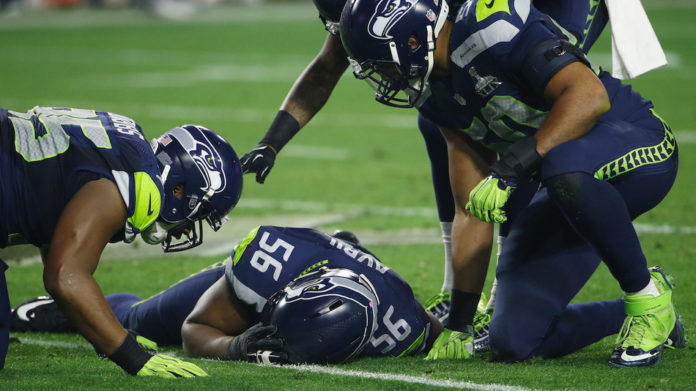NFL finally admits link between football, brain diseases

After years of mounting evidence, the NFL has finally acknowledged the link between the sport and chronic traumatic encephalopathy, or CTE, that’s been detected in players.
Steve Fainaru, the ESPN writer who co-authored League of Denial, the definitive book on the sport’s concussion crisis, reports that the admission came during a roundtable involving the U.S. House of Representatives’ Committee on Energy & Commerce.
The admission came from the NFL’s senior vice president Jeff Miller during an exchange with Illinois congresswoman Jan Schakowsky.
The moment from today’s roundtable when Rep. Schakowsky got NFL’s Jeff Miller to admit to link between football, CTEhttps://t.co/FIpzHUbJtm
— Mashable News (@MashableNews) March 14, 2016
The segment on the NFL also included Dr. Ann McKee, a Boston University neuropathologist who has specialized in CTE.
Schakowsky was critical of the NFL, pointing out that as recently as February, Dr. Mitch Berger, a member of the NFL’s Head, Neck & Spine Committee, denied a link between football and brain disorders. She added, “The NFL is peddling a false sense of security. Football is a high-risk sport because of the routine hits, not just diagnosable concussions.”
Watch the full exchange between Schakowsky, McKee and Miller below.
McKee was at the forefront of a recent study that found 79 percent of autopsied brains, donated by former football players, showed signs of CTE.
Overall, researchers say 131 out of 165 of the football players’ brains they studied, which works out to 79%, showed signs of CTE. The study looked at brains from players at all levels of the sport, not just professional football.
Many doctors and researchers believe CTE is caused by repeated blows to the head, which football players subject themselves to regularly. The disease is believed to be linked to conditions such as depression, memory loss, aggression, lack of impulse control and more.
While the study results appear to be definitive and alarming, the Department of Veteran Affairs and Boston University researchers only autopsied brains of former players who agreed to donate their organs posthumously because, while alive, they or their families suspected they may have been suffering from CTE-related symptoms. The disease can only be definitively diagnosed after death.
That means researchers are working with a skewed sample. Thus, the new study has no predictive value regarding how many current football players will get CTE, nor is it representative of football players as a whole.
CTE isn’t exclusive to NFL players, of course. As today’s forum addressed, head injuries are being studied across multiple sports, especially boxing, hockey and soccer.
Still, higher profile cases have involved NFL players, including two cases from last fall: Adrian Robinson Jr., a former NFL player who killed himself at the age of 25, and Hall of Fame legend Frank Gifford, who passed away in August, were both posthumously diagnosed with CTE.
And the NFL has also been battling with thousands of former players via litigation. A recent settlement came under fire from some of the players involved because the settlement doesn’t compensate them for symptoms related to CTE, which may be one reason the league finally admitted to the link.
More recently, for the NFL, a slew of retirements by younger players, including Calvin Johnson and Jerod Mayo, have prompted speculation that many of the revelations about head injuries and CTE are prompting the younger stars to step away from the game earlier than before.
Additional reporting by Sam Laird.
